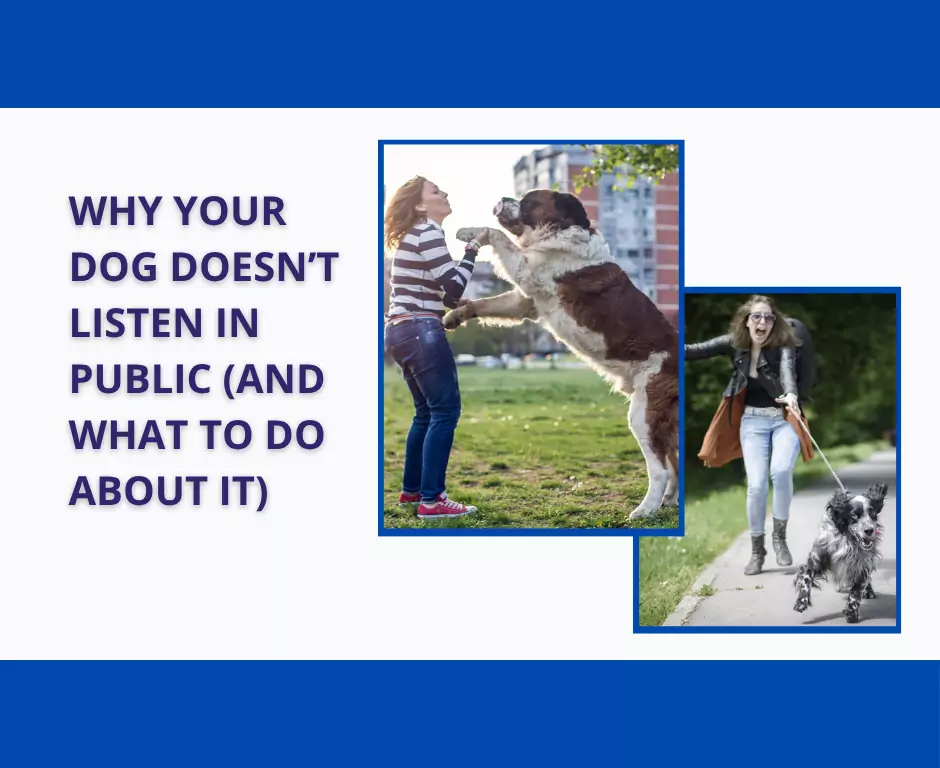Why Your Dog Doesn’t Listen in Public (And What to Do About It)
August 17, 2025

Your dog is a rockstar at home. They sit, stay, and come every time. Until you go to the park or walk around the neighborhood.
Suddenly, it’s like they’ve never been trained a day in their life.
If that sounds familiar, you’re not alone. I see it all the time, and it’s one of the most common frustrations owners face:
“My dog listens great at home, but ignores me in public.”
The good news? There’s a reason and a solution.
Obedience isn’t obedience until it works everywhere
What you’re seeing isn’t your dog being “stubborn” or “dominant.” You’re seeing a dog that’s only practiced behaviors in easy environments.
Dogs don’t generalize like we do. Just because they know “sit” in your kitchen doesn’t mean they’ll know it at the park.
Real obedience is proofed obedience.
Why dogs “forget” their training in new places
There are a few big reasons:
Lack of distraction work – They’ve only practiced in quiet settings.
Environment trumps handler – New smells, sights, and sounds take priority.
Handler energy shifts – You might be more anxious or distracted in public too.
Inconsistency with tools – At home you use structure. In public, you might be relying on hope.
It’s not that your dog forgot; they’ve just never been taught to succeed in that environment.
How to fix it
1. Stop expecting, and start proofing
If you want your dog to listen at the park, you have to train them at the park. That means going back to basics in the new space, not jumping ahead to off-leash freedom.
2. Train for the environment, not just the command
Instead of asking “Does my dog know sit?” ask:
“Can my dog sit in the middle of the farmer’s market while kids run by and a dog barks across the street?”
3. Use your leash like a tool, not a suggestion
The leash isn’t a decoration. It’s a communication line. Don’t be afraid to guide, correct, or reinforce as needed.
4. Be more interesting than the distractions
This doesn’t mean you need to be a circus clown. But you do need to matter. Use your voice, movement, engagement, and training games to build focus around you.
5. Break it into phases
Start in your front yard. Then the sidewalk. Then a quiet park. Then a busier one. Don’t expect your dog to go from 0 to 100 without learning the in-between.
Why it matters
A dog that only listens at home is still untrained in the real world.
Your dog deserves to be part of your life outside the house—on walks, in stores, on trips. But that privilege comes with responsibility: you have to train for the environment you want to enjoy.
Stop blaming your dog for being distracted. Start building the focus and clarity they need to succeed anywhere you go together.